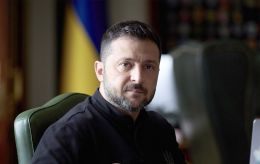Kharkiv’s neutron facility 'Dzherelo Neitroniv' hit 74 times by Russian attacks, risks explained
 Russian army shelling Ukrainian nuclear facilities (Illustrative photo: Getty Images)
Russian army shelling Ukrainian nuclear facilities (Illustrative photo: Getty Images)
In the event of shelling by the Russian army, Ukraine’s nuclear facilities could contaminate large areas, according to The New York Times.
Nuclear facility in Kharkiv
The New York Times reports, in particular, on the laboratory of the Kharkiv Institute of Physics and Technology, which houses an experimental device called the “Dzherelo Neitroniv” and several tens of kilograms of enriched uranium.
“If it were scattered, to contaminate much of the city,” the article states.
The laboratory is located 22 km from the front line.
According to Ukrainian authorities, the facility has been hit 74 times by Russian munitions.
After Russia’s invasion in 2022, scientists halted experiments and put the “Dzherelo Neitroniv” into long-term shutdown mode. However, the uranium remains, along with the risk of its release.
In other parts of the institute, scientists continue experiments with nuclear fusion using radioactive hydrogen, despite the daily attacks on Kharkiv.
Chernobyl risk
In addition, Ukraine has other nuclear facilities, such as research or power reactors, including the Chernobyl Nuclear Power Plant.
“The longer the war drags on, the greater the risk of a strike that could spread radioactive material across a wide area. Some of the sites have extensive security measures, but they were not built to take a direct hit from a large bomb,” the article notes.
Radiation danger began immediately after Russia’s invasion in 2022, when Russian troops entered Ukraine through the Chernobyl Exclusion Zone, stirring up dust containing small but detectable traces of plutonium, cesium isotopes, and other radioactive elements, risking a strike on the plant itself.
In February 2025, a Russian drone pierced a hole in the stainless-steel containment structure over the radioactive ruins of Reactor No. 4 at Chernobyl NPP. Although no radiation leak occurred, the strike compromised the integrity of the containment.
Nuclear safety violations at Zaporizhzhia NPP
As previously reported by RBC-Ukraine, citing the head of the International Atomic Energy Agency (IAEA), Rafael Grossi, almost all pillars of nuclear safety were compromised at the Zaporizhzhia Nuclear Power Plant as a result of Russia’s full-scale invasion of Ukraine and the occupation of the plant.
This refers to the seven key components of nuclear and physical protection identified by the IAEA at the start of Russia’s full-scale invasion, namely:
- Physical integrity.
- Equipment functionality.
- Absence of pressure on personnel.
- Reliable power supply.
- Continuous logistics.
- Radiation monitoring.
- Operation of communication channels.
Recently, Russian President Vladimir Putin claimed to be ready to cooperate with Ukraine and the US on the Zaporizhzhia NPP issue. However, he did not specify the nature of this cooperation.

